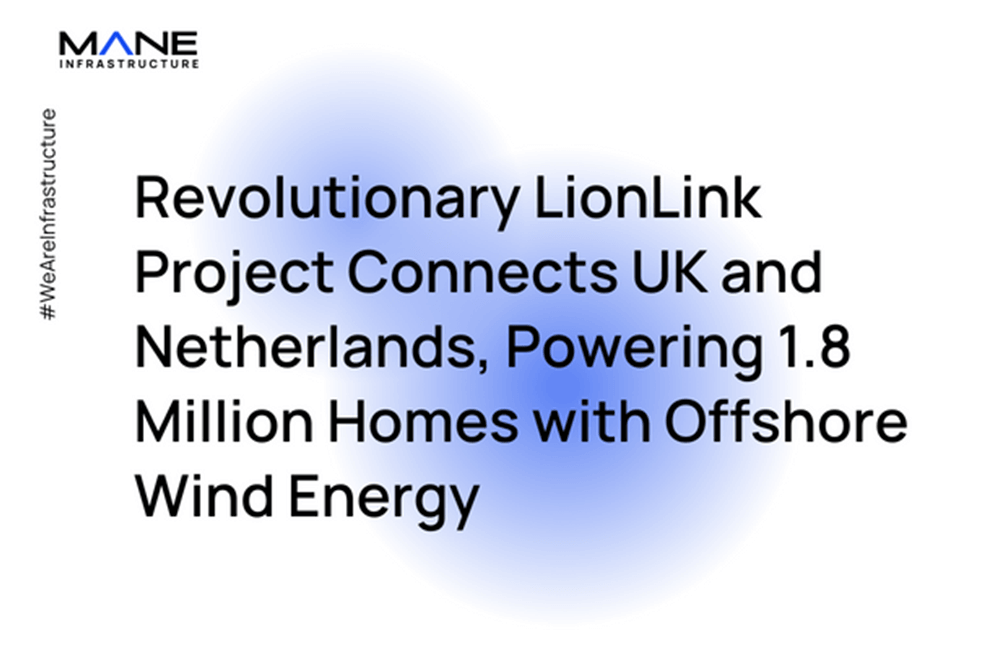Revolutionary LionLink Project Connects UK and Netherlands, Powering 1.8 Million Homes with Offshore Wind Energy
11 May, 202310 minsA brand-new electricity transmission line connecting the United Kingdom and the Netherlands ...

A brand-new electricity transmission line connecting the United Kingdom and the Netherlands is set to provide power to approximately 1.8 million households. This ambitious project aims to link the two countries and offshore wind farm initiatives in the North Sea.
TenneT, a Dutch company, will own and operate the offshore converter platform situated in the Dutch North Sea. This ground-breaking cross-border electricity line, called LionLink, will be only the second of its kind globally, following a similar venture constructed by Germany and Denmark.
What sets LionLink apart is its remarkable capacity to transmit more than four times the electricity compared to its predecessor, making it the world's largest interconnector in terms of power capability. Unlike conventional interconnectors that solely connect two nations, LionLink will serve a dual purpose, connecting both the UK and the Netherlands and simultaneously linking with offshore wind farms in the heart of the North Sea.
This innovative project, which bolsters energy security and independence in Europe, is being announced at a significant North Sea Summit in Belgium, demonstrating a commitment to the region's sustainable energy future.
Grant Shapps, the Energy Security Secretary, expressed enthusiasm for the historic agreement, stating, "Today's ground-breaking deal with the Netherlands unites our nations through this impressive display of innovation and engineering. It represents the largest interconnector in the world, providing electricity to more homes than the combined populations of Manchester and Birmingham."
Ben Wilson, President of National Grid Ventures, emphasised the transformative impact of connecting wind farms to multiple markets, heralding a new era for energy infrastructure and closer realisation of the vast green energy potential in the North Sea. Furthermore, Wilson highlighted the benefits of deploying electricity precisely where it is most needed while minimising the impact on coastal communities. To make this vision a reality, he stressed the importance of establishing a suitable political, legal, and regulatory framework for a mutually advantageous North Sea grid, delivering cleaner, fairer, more secure, and affordable energy for both British and European consumers.
LionLink, projected to transmit 1.8GW of electricity, far surpasses the capacity of Germany and Denmark's Kassø-Frøslev interconnector, which carries 0.4GW.
The transmission of electricity under the North Sea will be facilitated through submarine cables, with all cables buried underground from the landfall sites to the new converter station and from the converter station to the substation.
National Grid Ventures and TenneT will collaborate on the development of LionLink, aiming for it to become operational by the early 2030s. This announcement marks the commencement of the project's development phase, with a final investment decision expected by 2026.
LionLink builds upon the existing 8.4GW interconnector capacity in the UK, offering a significant boost of up to a fifth, thereby ensuring more clean and affordable power for British households and businesses.
Moreover, the implementation of LionLink will reduce the necessity for further onshore construction and visible infrastructure associated with future wind farm projects.
The UK's expertise, innovation, and skills in the North Sea energy sector are anticipated to attract £20 billion of annual investment to the country's coastal regions and create 40,000 skilled green jobs in Britain.


